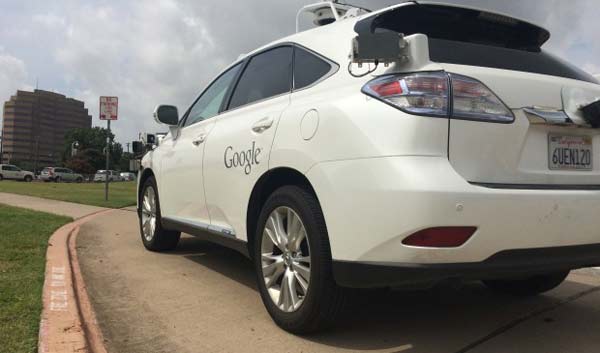
Texas, US (BBN)-A young man steered Google’s white Lexus RX – outfitted with a small sensor full of lasers, radars and cameras on its roof – down Riverside Drive on Tuesday.
Arguably, the driver’s presence was a redundancy: The car that left the Long Center just before noon drives itself, and is now being tested by Google on the streets of Austin, reports Austin Monitortor.
“We’re excited to be testing our technology on the roads of Austin, learning from these experiences from new traffic patterns, from new driving experiences,” said Gerardo Interiano, head of Google’s external affairs.
“In every community, drivers, cyclists – they drive in different ways. We want to learn from that.”
The Austin Police Department and Mayor Steve Adler have said they support exploring what effects self-driving cars might have on Austin’s transportation woes.
Google says the advantages of this technology include safer driving and the ability for seniors and those physically unable to drive to get around by car.
Yet, there are no policies or regulations in place at the state or city level.
Several bills, all of which failed in the most recent legislative session, would have encouraged the use of self-driving technology while instituting some state regulations.
Travis County Commissioner Brigid Shea, who has been a longtime proponent of autonomous vehicles, said she formed a working group on the topic with former City Council Member Laura Morrison and Transportation Department Director Robert Spillar back in 2012.
In emails Shea exchanged in 2014 with Sarah Hunter, Google’s head of policy, Hunter said Google wasn’t yet ready to pilot the program outside of California.
“Unfortunately we’re not ready to talk with locations that are keen to host self driving cars just yet,” wrote Hunter.
“The team are really focused on the engineering development and testing here in CA. Once we are ready to have a conversation about operations, I promise I will come back to you.”
Shea said she does not know if her encouragement brought Google to Austin this week.
At the local policy level, Shea criticized the Capital Area Metropolitan Planning Organization, known as CAMPO, on its 2040 plan, which does not consider the long-term impact of roads full of self-driving cars.
“This technology is here, and that’s why it’s so frustrating that our long-range transportation plan doesn’t even say a word about it,” said Shea.
While the CAMPO 2040 plan acknowledges self-driving technology, it holds off on addressing any effects these cars might have on local roads.
“While this technology is developing rapidly, autonomous vehicles are not likely to be in widespread use before the next plan update,” reads the plan.
Assistant Director Phillip Tindall told the Austin Monitor that he anticipates the impact of autonomous cars to be incorporated into the group’s 2045 plan.
Council Member Ann Kitchen, who heads the city’s Mobility Committee, told the Monitor that representatives from Google will present at either the committee’s August or September meeting.
She said that although a lot of recent transit ideas have been centered on getting cars off the roads, self-driving technology is useful because it provides another option for commuters.
“With transportation, there is no one solution that fixes everything,” said Kitchen.
“Some people will drive cars, or need to drive cars; some people will ride a bus; some people have options not to be on the road because they’re working at home or not working.”
Kitchen said she does not anticipate that Google representatives will be ready to share final results from the newly launched Austin pilot at the committee meeting.
“I think our first step is to see how it works,” she said.
BBN/SK/AD